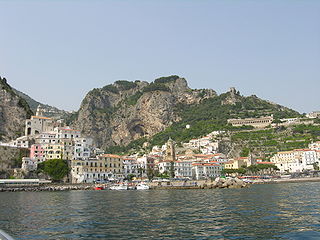
Amalfi is a town and comune in the province of Salerno, in the region of Campania, Italy, on the Gulf of Salerno. It lies at the mouth of a deep ravine, at the foot of Monte Cerreto, surrounded by dramatic cliffs and coastal scenery. The town of Amalfi was the capital of the maritime republic known as the Duchy of Amalfi, an important trading power in the Mediterranean between 839 and around 1200.

Salerno is an ancient city and commune in Campania, southwestern Italy, and is the capital of the namesake province, being the second largest city in the region by number of inhabitants, after Naples. It is located on the Gulf of Salerno on the Tyrrhenian Sea. In recent history the city hosted Victor Emmanuel III, the King of Italy, who moved from Rome in 1943 after Italy negotiated a peace with the Allies in World War II, making Salerno the capital of the "Government of the South" and therefore provisional government seat for six months. Some of the Allied landings during Operation Avalanche occurred near Salerno.

Positano is a village and comune on the Amalfi Coast, in Campania, Italy, mainly in an enclave in the hills leading down to the coast.

The Amalfi Coast is a stretch of coastline in southern Italy overlooking the Tyrrhenian Sea and the Gulf of Salerno. It is located south of the Sorrentine Peninsula and north of the Cilentan Coast.

Cava de' Tirreni is a city and comune in the region of Campania, Italy, in the province of Salerno, 10 kilometres northwest of the town of Salerno. It lies in a richly cultivated valley surrounded by wooded hills, and is a popular tourist resort. The abbey of La Trinità della Cava is located there.

Ravello is a town and comune situated above the Amalfi Coast in the province of Salerno, Campania, Southern Italy, with approximately 2,500 inhabitants. Its scenic location makes it a popular tourist destination, and earned it a listing as a UNESCO World Heritage Site in 1997.

The Province of Salerno is a province in the Campania region of Italy.

Altavilla Silentina is a town and comune located in the province of Salerno, Campania, some 100 km south of Naples, Italy.

Maiori is a town and comune on the Amalfi coast in the province of Salerno. It has been a popular tourist resort since Roman times, with the longest unbroken stretch of beach on the Amalfi coastline.
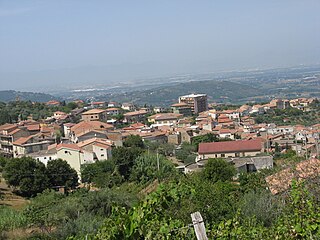
Albanella is a town and comune in the province of Salerno in the Campania region of south-western Italy. It is located 51 kilometers from the city of Salerno.

Atrani is a city and comune on the Amalfi Coast in the province of Salerno in the Campania region of south-western Italy. It is located to the east of Amalfi, several minutes drive down the coast.
Cetara is a town and comune in the province of Salerno in the Campania region of south-western Italy. It is located in the territory of the Amalfi Coast.

Corbara is a town and comune in the province of Salerno in the Campania region of south-western Italy.
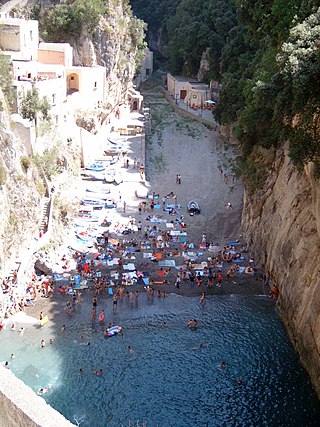
Furore is a town and comune in the province of Salerno in the Campania region of south-western Italy. Furore is located on the Amalfi Coast.
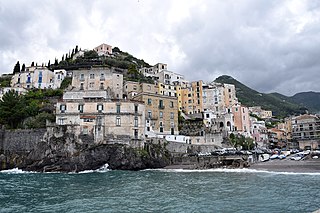
Minori is a comune in the province of Salerno, in the Campania region of south-western Italy. As a part of the Amalfi Coast, it was declared a UNESCO World Heritage Site in 1997.
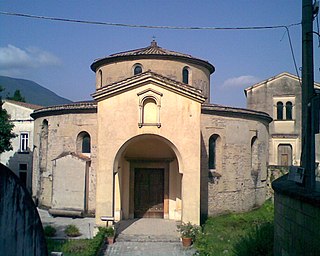
Nocera Superiore is a town and comune in the province of Salerno in the Campania region of south-western Italy.

Vietri sul Mare is a town and comune in the province of Salerno, in the Campania region of southern Italy. It is situated just west of Salerno, separated from the Port of Salerno by only a harbour wall. The town is known for its polychrome ceramics, a tradition since at least the 15th century, and is considered to be the gateway to the Amalfi Coast.

Scala is a town and comune in the province of Salerno in the Campania region of south-western Italy. It is located on a rocky hill c. 400 m above sea-level and is part of the Amalfi Coast.

Chiunzi is a mountain pass in Campania, Italy. It connects the Agro Nocerino Sarnese with the Amalfi coast through the municipalities of Sant'Egidio del Monte Albino and Tramonti. It is situated between the municipalities of Tramonti and Corbara, in the Province of Salerno.
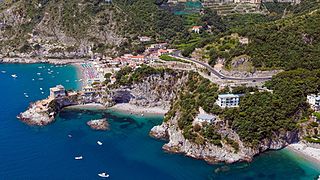
Erchie is an Italian village and hamlet (frazione) of the municipality of Maiori in the Province of Salerno, Campania. It is part of the Amalfi Coast and its population is 83.

























